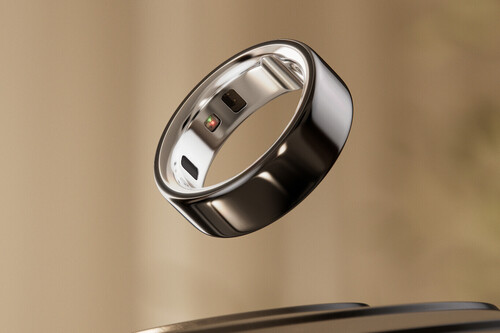Smart rings have been gaining traction in many people’s daily lives. These small wearable devices are useful for tracking health indicators, especially among women.
The ring. Over the past few months, TikTok has been filled with videos of women discussing and trying out the Oura Ring. The device tracks ovulation, menstrual cycles, and pregnancy. It monitors several physiological parameters such as body temperature, resting heart rate, and heart rate variability. These indicators help users understand their hormone levels and menstrual cycles.
Everyone wants one. The popularity of the Oura Ring reflects a growing demand among women to manage their cycles without relying on calendars, manual calculations, or apps. This enables women to control their cycles more effectively and identify hormonal patterns, especially for those trying to get pregnant.
However, many popular videos on TikTok are labeled as “Commission paid.” This means that a great portion of the positive reviews and comments may be disguised advertising.
@thereeseco Smart Ring #smartring #stepcount #healthandfitness #fitnessgoals
♬ original sound - Reese
Other options available. The interest in menstrual cycle monitoring isn’t limited to the Oura Ring. The Ultrahuman Ring is also gaining popularity among female users. Meanwhile, well-known smartwatches such as Samsung’s Galaxy Watch and the Apple Watch still have basic cycle tracking features.
A TikTok user compared the Oura and Ultrahuman rings and concluded that the main differences are aesthetics and the subscription model. While Oura requires a monthly payment, Ultrahuman doesn’t.
Addressing a gap. In the era of wearables, tracking various body parameters has become an obsession for many. However, there’s been a significant oversight in addressing female health needs. According to a study published in ScienceDirect, only 12% of women’s health apps meet basic medical standards. City A.M. attributes this to a gender bias in Silicon Valley, suggesting that priorities have focused on activities like running rather than menstrual cycle tracking. Startups such as Clue and Oura are working to fill this gap.
Are rings trustworthy? Wearables like the Oura Ring and apps such as Natural Cycles have significantly improved menstrual cycle tracking and offer women greater control over their reproductive health. However, the reliability of these devices can diminish in cases of irregular cycles, inconsistent usage, and external factors like stress. They may also fail to deliver accurate results for women with conditions such as polycystic ovarian syndrome and endometriosis.
Calculating your period. Some women claim this technology is a hormone-free contraceptive alternative, but that’s not true. The Food and Drug Administration has approved it as a hormone-free option for women with regular cycles who want to get pregnant using the rhythm method. Essentially, the ring calculates days when conception is more or less likely, but it’s not a contraceptive method. Additionally, some TikTok users have gotten pregnant because they believed this method was effective for birth control.
While tech innovations have addressed many needs in women’s health, users need to be aware of the limitations and nuances associated with these devices.
Image | Oura
Related | Oura Ring 4 vs. Samsung Galaxy Ring: Which Smart Ring Is the Best Fit for You?




Log in to leave a comment